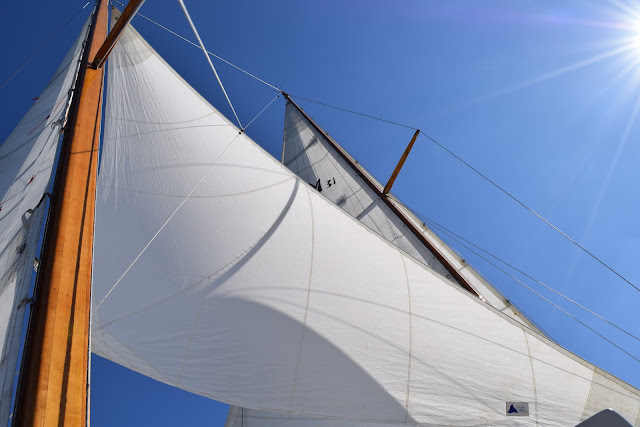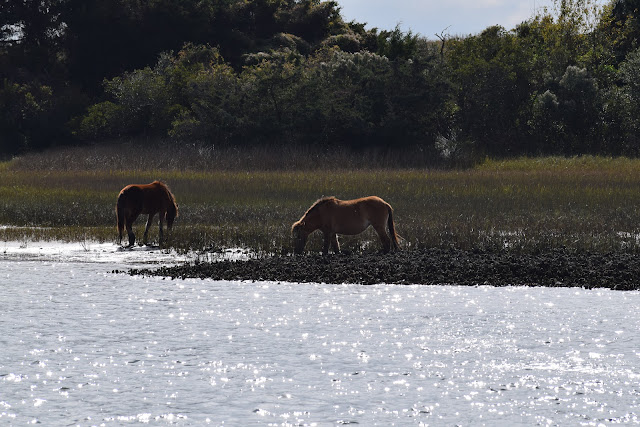First Half of May
Our Guanaja chapter felt like more of an adventure
than any other part of the trip. We scooted out of an anchorage in the
face of bad weather and instead of slogging against it, we took a
favorable tack and sailed to a place we hadn't planned to visit and knew
next to nothing about. That same weather brought cool
temperatures and allowed us to really enjoy the serendipitous paradise
we'd stumbled into. Most importantly, we met a number of friendly
sailors and locals who were both generous and great company. If we'd clung to
our plans and fought through the weather, we'd have completely missed
out on Guanaja and the whole reason we were sailing in the first place.
A cold front came down from the States and knocked JUMBLE's crew from our Vivorillo idyl. We'd been watching the weatherfax and were waiting for northerly winds to pass before attempting passage to Isla Mujeres. The Gulf Stream runs swiftly North in the Yucatan Channel at speeds of 2-4 knots. Whenever wind blows against current, waves are steepened and, especially in strong winds, conditions can get nasty. Even without the current, northerly winds wouldn't help our NNE course.
To put to sea in a tired old boat on a meager budget requires one to be an optimist. I was sure we could ride out the cold front in an open anchorage if we tucked JUMBLE close to the reef and set a stern anchor to keep things comfortable. These preparations were made in the afternoon. My plan might have worked with a N wind, but I honestly doubt it. When the wind finally came it was WNW. Some small swell came in from the W about an hour before the wind, so we had some clue that the situation would deteriorate. We were anchored in 15' of water off a lee shore and things would get worse.
At 2100, we hastily put to sea, wrenching the outboard off the dinghy in the chop. We always deflate and stow our dinghy before offshore passages, but there wasn't any time. 2 footers were breaking on Boga Key as we pulled away into deeper water. We were aware of the isolated, uncharted coral around us, but there wasn't much we could do in the moonlight. This was one of the few times when we were glad for JUMBLE's shallow draft and long keel. The first evening was mild, winds in the 10-15 knot range and waves becoming more north at 3-4' as we left the shelter of the cays. We tried to motor our course towards Isla Mujeres, hoping that the winds would shift back to the east, but they held NW or N through the night with little rain.
 |
| Hey There Buddy! |
At daybreak, Anna jumped into the dingy to bail it out, then we hoisted it aboard with the main halyard and mizzen staysail halyard. The waves were a little larger and still north, with clouds on the horizon. We felt a lot more comfortable once the dinghy was deflated and wrestled into its locker. We gave up on Mujeres and turned W towards the island of Guanaja, around 120 miles away and the closest reliable harbor.
 |
| Fun in the Rain |
 |
| Happy Anna |
Along the way we had several rain squalls and steady winds from 15-20 knots with +/-10 knots in the squalls. The Sailomat was happy to steer and we stayed dry inside. There was no visible traffic. It blew harder the second night, but more steady. JUMBLE would let us know when it was time to reef. She'd slew around and yaw more then usual when overpowered; roll and wallow when underpowered. We ran the 85% jib, double reefed main and mizzen, dropping the main in the squalls. Things cooled down, even with the cabin closed up. The waves probably maxed at 6' and it was a comfortable ride.
 |
| Third Coffee |
The next morning, approaching Guanaja, heavy rain limited visibility to a few hundred feet. Guanaja itself is steep, but it is surrounded by low reefs and cays, protecting nearly the entire island. The eastern entrance channel is a few hundred yards wide and it shoals rapidly on the reef, so your depth sounder won't save you if you stray too close. There are no buoys or horns. We trusted our charts, but weren't about to enter blindly by GPS. I circled around in heavy rain for about two hours. There were a few false starts, where I could see a few cays and the heights of the island, then the rain would beat down again. Morale was high, but it got frustrating. When the clouds finally parted, it was a heavenly scene. The air was fresh and cool and clouds rolled down the verdant hills of the island. I put the throttle down and JUMBLE raced through the channel as fishermen paddled out their cayucas with plastic snow shovels.
 |
| Finally Clearing |
 |
| Bonnaca Town |
 |
| Soggy Sailor |
 |
| Across from Bonnaca |
 |
| More Bonnaca |
 |
| Heading towards El Bight |
 |
| Satellite Image Showing Reefs |
JUMBLE stayed in El Bight anchorage in Guanaja for almost two weeks. Eventually, we forced ourselves to leave in strong NE trades (and slightly hungover) because we were afraid we'd stay too long and have to ride out hurricane season in the Rio Dulce. With our dinghy, we were able to access the entire island from the water, which is what the locals do. There are few vehicles or roads. The barrier reef keeps the shoreline protected, making landing easy and grocery trips comfortable. There's a little tourist development, but of the adventurous type. The diving is superb and there are several nice hotel/dive boat places; however, access is by small boat or flying into the tiny airport via La Ceiba. Services are basic, but the islanders are friendly and there is a community of eccentric expatriates from the US and Europe.
 |
| Dinghies at Manati |
 |
| The Hangout |
We spent most evenings at the Manati: an open, tropical kind of place run by a German couple. Officially it was a restaurant & bar, but it was a bit more than that. More like an inn without lodging, although the proprietors' son runs a small hotel nearby. Long nights of conversations over food and booze were the norm and we had a great time. During the day, we hung out on JUMBLE and read or dinghied around for some hiking or diving. I was still recovering from the sand fly plague and there were plenty of them in Guanaja, along with the usual mosquitos. Some of the expatriates liked to joke about malaria, yellow fever or other tropical depredations. One of the downsides of living in a tropical paradise is catching one of these bugs at least once. The good news? "It's not that bad!" Food for thought. Perhaps because of the bugs on the main island, most of the locals live on crowded Bonnaca Cay, the "Venice of the Caribbean".
 |
| Streets of Bonnaca Cay |
There's a lot I could say about this place, but this post has gone on long enough, so I'll let a few more pictures do the talking.
 |
| Jurassic Park-Esque Villa on West Side |
 |
| Green Flash Bar on West Side |
 |
| Failed Hotel Development |
 |
| Into the Jungle |
 |
| First Stage of Waterfall |
 |
| Bathing Beauty |
 |
| Good Water Pressure for a Shower |
 |
| Nice Cove North of Anchorage |
 |
| Around Michael's Rock, Good Visibility |
 |
| I Messed with Contrast, More Colorful in Person |
 |
| Mix of Pines in Drier Areas, Jungle Elsewhere |
 |
| Canal Thru Island |
We really liked this place and were tempted to stay and really get into the area. Maybe in another life with more money saved and a larger, more comfortable boat. If we return to the Caribbean, we'll be coming back to Guanaja.









































































